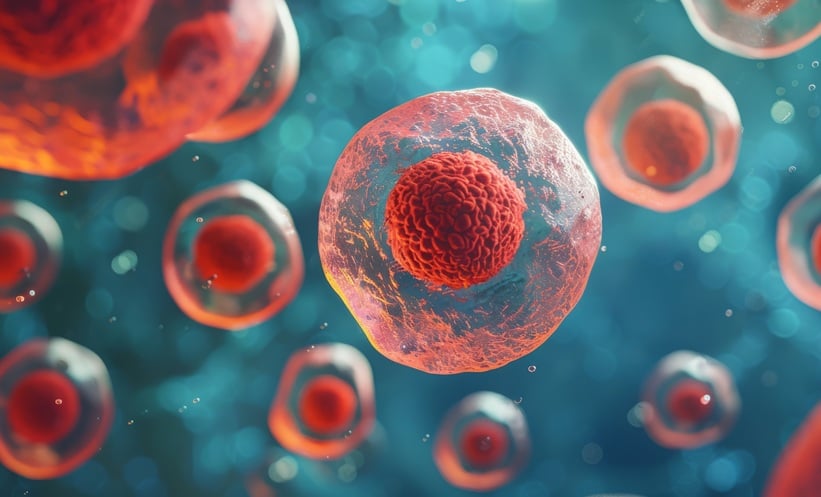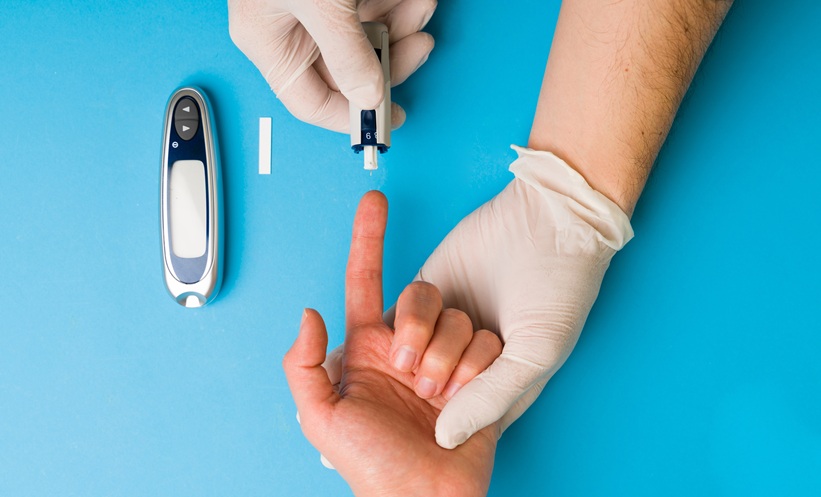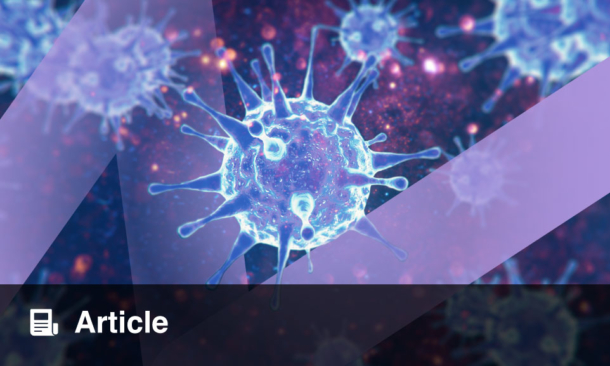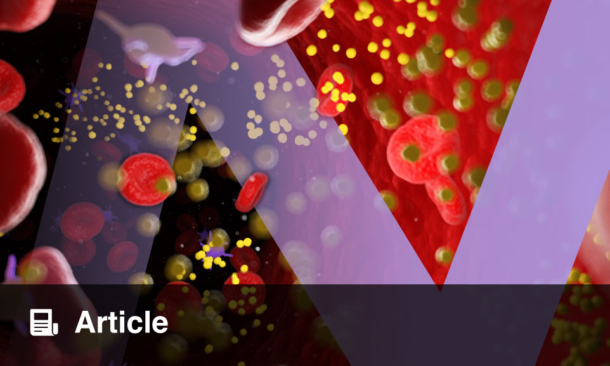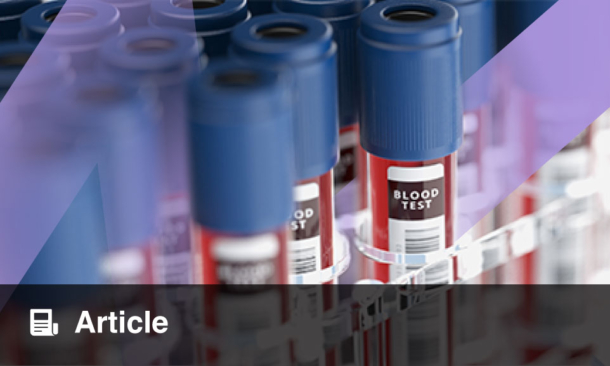Abstract
Type 2 diabetes (T2D) remains a global health challenge, and ongoing advancements in therapeutic strategies are essential for its effective management. This review explores recent improvements in the treatment of T2D, including developments in pharmacotherapies, technologies, and lifestyle interventions, as well as nanomedicines and regenerative therapies. Novel glucose-lowering agents such as glucagon-like peptide-1 receptor agonists, sodium-glucose co-transporter 2 inhibitors, and their combination therapies have demonstrated improved glycaemic control and cardiovascular benefits. Dietary and lifestyle modifications, coupled with digital health tools, provide holistic approaches to long-term disease management. The integration of continuous glucose monitoring systems, insulin pumps, and artificial pancreas technologies has revolutionised personalised diabetes management. Application of nanomedicines has been explored using nanoparticles, and has shown promise in several studies. The review also explores emerging regenerative medicine, such as gene therapy, β-cell regeneration, and microbiome-targeted treatments, which offer promising future perspectives. The evolving landscape of T2D treatment holds potential for improved patient outcomes and quality of life, with an emphasis on personalised approaches. This paper thoroughly discusses and concludes the challenges and potential future directions from the recent research findings and improvements in the management of T2D.
Key Points
1. Type 2 diabetes is a significant global health challenge, affecting over 500 million adults worldwide, with a rising prevalence and associated complex comorbidities. Despite advances in pharmacotherapy and technology, durable glycaemic control and prevention of complications are difficult to achieve for many patients.2. Recent clinical advances and trials have demonstrated meaningful progress in achieving better glycaemic control, cardiovascular protection, and patient-centred outcomes. The integration of innovative drugs, technologies, and regenerative approaches marks a shift toward personalised, evidence-driven care that continues to redefine the management of Type 2 diabetes.
3. To effectively integrate lifestyle care with emerging therapies, translational research and implementation efforts should emphasise more scalable solutions that can be used widely.
INTRODUCTION
Type 2 diabetes (T2D) is a chronic metabolic disorder characterised by insulin resistance and impaired insulin secretion, leading to elevated blood glucose levels. The global prevalence of T2D has reached alarming rates, with WHO estimating over 422 million adults were living with diabetes in 2014. In 2021, the International Diabetes Federation (IDF) reported that 537 million adults had diabetes, showing a significant rise over a period of 6 years.1,2 This epidemic poses significant public health challenges, as T2D is associated with a myriad of complications, including cardiovascular disease, neuropathy, nephropathy, and retinopathy, which can severely impact patients’ quality of life and increase healthcare costs.1-3 In response to this growing crisis, there is an urgent need for innovative and effective therapeutic strategies to manage T2D. Recent advancements in pharmacotherapy, technology, and lifestyle interventions have transformed the landscape of diabetes management. Novel glucose-lowering agents, such as glucagon-like peptide-1 (GLP-1) receptor agonists, sodium-glucose co-transporter 2 (SGLT2) inhibitors, and dual-action glucose-dependent insulinotropic polypeptide (GIP) receptors have shown promise, not only in improving glycaemic control, but also in providing weight loss and cardiovascular benefits, thereby addressing the multifaceted nature of T2D.4,5 Furthermore, the integration of continuous glucose monitoring (CGM) systems and insulin delivery technologies, including insulin pumps and artificial pancreas (AP) systems, has revolutionised personalised diabetes care, allowing for more tailored and responsive treatment approaches.4 In addition to pharmacological advancements, lifestyle modifications remain a cornerstone of T2D management. Evidence from various studies highlights the effectiveness of dietary changes and physical activity in preventing and managing diabetes.6,7 Programmes such as the Diabetes Prevention Program (DPP) have demonstrated that structured lifestyle interventions can significantly reduce the risk of developing T2D in high-risk populations.8,9 As the understanding of T2D evolves, emerging research areas, including gene therapy, β-cell regeneration, and microbiome-targeted treatments, offer exciting prospects for future therapeutic options.1 This review focuses on recent advancements in T2D treatment, emphasising the importance of a multifaceted approach that combines pharmacotherapy, nanotechnologies, regenerative medicines, and lifestyle interventions to optimise patient outcomes and enhance quality of life. The authors’ review concludes by discussing challenges we face today in the management and treatment of T2D, potential future directions, and the need for improvements in the long-term management strategies for individuals living with T2D.
DIETARY AND LIFESTYLE INTERVENTIONS
Dietary interventions remain a cornerstone of T2D management, with recent reviews advocating for structured dietary strategies aimed at achieving remission. Structured dietary interventions have been implemented in the UK to address obesity and its association with T2D. The DiRECT trial exemplifies this approach, demonstrating that a comprehensive weight management programme can lead to significant weight loss and improved glycaemic control in individuals with T2D.10,11 This programme emphasises the importance of lifestyle changes, including dietary modifications, as a cornerstone of diabetes management. Evidence suggests that specific dietary patterns can significantly improve glycaemic control and even reverse T2D in some patients.12,13 The integration of psychological support and education in diabetes management programmes has also been shown to enhance patient outcomes, emphasising the importance of a holistic approach to care.14 Recent research suggests that supplementation with certain natural products, such as chokeberry juice, which is rich in polyphenols, can positively impact glycaemic control and overall health status in patients with T2D.15,16 Additionally, low-carbohydrate diets and ketogenic diets have shown promise in managing blood glucose levels.17 This suggests that integrating dietary strategies with conventional treatments may enhance the effectiveness of diabetes management.
Multicomponent intervention programmes like Reverse Diabetes2 Now (RD2N) in the Netherlands combine personalised dietary guidance, mainly focused on fresh and unprocessed foods, with structured exercise, behavioural coaching, and social support. Implementing these interventions for 24 months demonstrated significant reductions in HbA1c levels, medication use, and weight, alongside improved lipid profiles.18,19 The success often hinges on sustained engagement, personalised support, and addressing social determinants of health. Strategies incorporating tailored meal planning, routine physical activity, and community involvement have proven effective for diverse populations.19 The recognition of individual patient characteristics has led to more personalised treatment strategies. This includes considering genetic factors, lifestyle, and patient preferences when designing treatment plans.20,21 The focus on personalised medicine is expected to expand even more in the near future, with an emphasis on tailoring treatment plans to individual patient needs and preferences, to optimise diabetes care.22,23 The evidence from several studies shows that lifestyle interventions are indispensable in T2D management, complementing pharmacological approaches to reduce complications and enhancepatient outcomes.
RECENT IMPROVEMENTSIN TREATMENT
Recent Pharmacological Advancements
Recent developments include GLP-1 receptor agonists and SGLT2 inhibitors, which not only lower blood glucose levels but also offer cardiovascular and renal protective benefits. These medications are particularly beneficial for patients who may not achieve adequate control with metformin alone, highlighting the importance of personalised treatment approaches that consider individual patient characteristics and preferences.24 Both GLP-1 receptor agonists and SGLT2 inhibitors have also been shown to be beneficial in patients with obesity for weight loss.22 However, metformin still remains the cornerstone of T2D treatment, especially for patients who are overweight or obese. Its efficacy in lowering blood glucose levels and its favourable safety profile make it a preferred choice.25,26
SGLT2 inhibitors have emerged as a major therapeutic advancement due to their glucose-lowering efficacy and established cardiovascular and renal benefits in several agents (empagliflozin and dapagliflozin) of the class. Bexagliflozin, a newer SGLT2 inhibitor, which received FDA approval in 2023, has demonstrated safety and effectiveness in glycaemic control, as highlighted in a recent systematic review.27 The BEST trial demonstrated its efficacy in improving glycaemic control with a favourable safety profile, though it did not specifically assess major adverse cardiovascular events. Consequently, unlike earlier agents such as empagliflozin and dapagliflozin, cardiovascular and renal outcome data for bexagliflozin are currently lacking, and its long-term benefits remain under investigation. The Japanese Diabetes Society (JDS) recommends SGLT2 inhibitors as a first-line option for patients with obesity, underscoring the growing importance of this class in T2D management.28 Similarly, the European Association for the Study of Diabetes (EASD) and American Diabetes Association (ADA) consensus reports now encourage the early use of SGLT2 inhibitors, especially in patients with cardiovascular and chronic kidney disease.29,30 Furthermore, the National Institute for Health and Care Excellence (NICE; UK) has updated, supporting the broader use of SGLT2 inhibitors earlier, particularly for individuals at high cardiovascular or renal risk.31
GLP-1 receptor agonists were established as effective agents in the management of T2D. Like SGLT2 inhibitors, these drugs lower blood glucose levels and promote weight loss in patients with T2D.32 Liraglutide is a well-established agent, used since its FDA approval in 2010. However, recent advancements have introduced newer and more effective incretin-based therapies, including semaglutide and dual incretin agonists such as tirzepatide (a combined GIP/GLP-1 receptor agonist), which provide much better glycaemic control and greater weight reduction compared to earlier GLP-1 agents.33,34 GLP-1 receptor agonists facilitate weight loss and improve glycaemic control (as an established medication used for weight loss). GIP, on the other hand, is mostly used as part of dual agonists (like tirzepatide, a GIP/GLP-1 dual agonist), rather than as monotherapy. According to the British National Formulary (BNF), GLP-1 receptor agonists may be considered in combination with other antidiabetic drugs in patients with T2D when standard therapies (such as metformin and SGLT2 inhibitors) are not successful.35 Dual GIP/GLP-1 receptor agonists (e.g., tirzepatide) are recently emerging therapies, and still under evaluation, but standalone GIP agonists are not currently recommended by the BNF guidelines. The pharmacotherapy of T2D is rapidly evolving through research and clinical trials, with SGLT2 inhibitors and GLP-1 receptor agonists at the forefront.
Additionally, triple incretin agonists like retatrutide are in advanced clinical development, showing remarkable metabolic benefits in early trials.22 Novel combination drugs, like amycretin (a dual amylin/GLP-1 agonist) and semaglutide–cagrilintide co-formulation, represent the next generation of incretin-based therapies targeting both glucose regulation and body weight.36,37
Recent clinical and real-world studies indicate that the combination of SGLT2 inhibitors and GLP-1 receptor agonists may offer synergistic effects, enhancing glycaemic control while also reducing cardiovascular and renal risks.38-40 This evolving therapeutic approach exemplifies a move toward personalised medicine, where treatment regimens are tailored to individual metabolic profiles and comorbidities.41 Emerging research continues to explore additional pharmacological options, including novel agents targeting different metabolic pathways. For instance, recent findings suggest that taurine may have beneficial effects on glycaemic control and lipid profiles in patients with T2D, indicating a potential new avenue for adjunctive therapy.42 Furthermore, advancements in insulin therapy, including new analogues and delivery systems, are being developed to improve patient adherence and outcomes.43
Emerging pharmacotherapies such as glucokinase activators offer to improve glycaemic control while protecting pancreatic β-cell function.44 Natural compounds, such as quercetagitrin, have recently been highlighted as lower-toxicity alternatives to synthetic medications.45 These agents may provide more effective and individualised management options.
Developments in Technologies
Technological developments and innovations in the treatment of diabetes have shown significant transformation. One of the most notable developments is the AP, also known as a closed-loop insulin delivery system. This technology, originally developed for Type 1 diabetes (T1D), integrates CGM with automated insulin secretion to maintain target glucose levels.46-48 While most AP data relate to T1DM, recent studies have also demonstrated promising outcomes in insulin-treated patients with T2D, including improved time-in-range and reduced hypoglycaemia, proving potential applicability beyond T1DM.49-51
In the UK and other regions, the integration of wearable devices, mobile health applications, and structured lifestyle management tools reflects a shift toward more patient-centred, technology-assisted care. Emerging interventional procedures such as duodenal mucosal resurfacing have shown significant improvements in insulin sensitivity among patients with T2D. Duodenal ablation with electroporation therapy, specifically through the technique of duodenal mucosal resurfacing (DMR), has emerged as a promising intervention for patients with T2D. DMR involves the hydrothermal ablation of the duodenal mucosa, which has been shown to significantly improve glycaemic control, as evidenced by reductions in HbA1c levels in clinical trials.52-54 The mechanism behind this improvement is believed to be linked to alterations in duodenal signalling pathways that enhance insulin sensitivity, thereby addressing the underlying insulin resistance characteristic of T2D.55,56 Notably, the extent of glycaemic improvement appears to correlate positively with the length of the ablated mucosal segment, suggesting a dose-response relationship.53,54 Furthermore, the safety profile of DMR has been established in multicentre studies, indicating that it is a minimally invasive option with favourable outcomes for metabolic control, including potential benefits for associated conditions such as non-alcoholic fatty liver disease.52,55-57 Overall, DMR represents a novel therapeutic approach that leverages the duodenum’s role in metabolic regulation, offering hope for improved management of T2D.
The integration of AI into diabetes management has opened new avenues for personalised treatment. AI-driven applications can analyse data from various sources, including CGMs and patient activity levels, to provide tailored recommendations for insulin dosing.58,59 This capability enhances patient engagement and adherence to treatment protocols, ultimately leading to better health outcomes.46,59 The use of wearable devices and smartphone applications has also facilitated more comprehensive diabetes management by allowing patients to track their glucose levels and receive real-time feedback.59,60 Research indicates that CGMs can significantly improve glycaemic control and reduce the risk of hypoglycaemia compared to traditional self-monitoring methods.60,61
CGMs have been shown to significantly improve glycaemic outcomes in patients with T2D. Clinical studies report HbA1c reductions ranging from 0.5–1.0% compared with standard self-monitoring methods.61-63 CGMs can enhance time-in-range metrics to reduce hypoglycaemic episodes, providing better glycaemic control. Despite these advantages, universal adoption remains limited due to factors like cost, lack of reimbursement in some healthcare systems, patient training requirements, and digital literacy.60 While CGMs are not currently used diagnostically, their continuous data streams are increasingly incorporated into clinical decisions and AI-based algorithms to optimise therapy adjustments.
The increasing adoption of CGMs in the UK is supported by their ability to provide continuous data, which can be crucial for making informed decisions about diet and insulin administration.61 Mobile health applications have become important tools in the management of T2D. These applications facilitate communication between patients and healthcare providers, allowing for personalised feedback and support.64 They have significantly enhanced self-management capabilities among individuals with T2D. A systematic review highlighted that these applications can effectively support diabetes self-care behaviours, leading to improved glycaemic control, as evidenced by reductions in HbA1c levels.65,66 They often include features such as medication reminders, dietary tracking, and educational resources, which empower patients to take an active role in their diabetes management.67 The integration of these applications with electronic health records enhances their utility by providing healthcare professionals with access to real-time patient data, thereby improving the quality of care.68
Innovations in technologies will play a central role in the future of diabetes care. Integrating wearable devices, AI-supported tools, CGMs, and telehealth can provide greater patient engagement, adherence, and treatment adjustments.20,58,59 They may also help address systemic barriers such as therapeutic inertia by playing a role in timely treatment intensification, hence reducing the long-term complication risks.68,69
Nanomedicine and Regenerative Medicine Approaches
Nanomedicine has emerged as a transformative field in drug delivery. Application of nanoparticles such as polymeric nanoparticles, polymeric nanocapsules, lipid nanoparticles, and liposomes showed several advantages, including enhanced drug solubility, controlled drug release, and targeted delivery, suggesting it can improve therapeutic efficacy and minimise side effects.70-82 Polymeric nanoparticles are characterised by their biodegradability, biocompatibility, and high drug-loading capacity, and can be carriers of therapeutic agents.70,71 They can be designed to release drugs in a controlled manner, to improve the pharmacokinetics of poorly soluble drugs.72,73
Preclinical studies have demonstrated that polymeric and lipid nanoparticles loaded with antidiabetic agents such as metformin, pioglitazone, and curcumin can improve glycaemic control and insulin sensitivity in T2D.74,75 Insulin-loaded chitosan nanoparticles have shown prolonged glucose-lowering effects and improved oral bioavailability in rats with diabetes.76 In another study, GLP-1 analogues, such as exenatide and liraglutide, have also been successfully encapsulated in poly(lactic-co-glycolic acid) nanoparticles, improving half-life and enhancing pancreaticβ-cell protection.77,78
Nanoparticles have also shown promise in oral and targeted drug delivery, with better absorption. Polymeric and lipid-based carriers can improve the stability and bioavailability of oral antidiabetic drugs.79,80 Lipid nanoparticles and carbon nanorods, in recent research, have enhanced glucose homeostasis and promoted wound healing in diabetic models.81,82 Nanocarriers can deliver siRNA targeting insulin resistance pathways, which is a novel strategy for addressing β-cell dysfunction in T2D.83,84 Biogenic synthesis of nanoparticles has also been seen in studies as a safe and effective method for developing antidiabetic agents.85,86
Regenerative medicine approaches, including gene therapy, stem cell therapy, and diabetic wound healing, have shown great promise in the treatment of T2D. Gene therapy aims to correct or replace defective genes responsible for disease progression, offering a potential cure rather than symptomatic treatment.87 Stem cell therapy has shown promise in regenerating damaged tissues and restoring insulin production in patients with diabetes, thereby addressing the underlying causes of the disease. Additionally, advancements in wound healing techniques, particularly for diabetic ulcers, are crucial as these complications are prevalent in T2D. Innovative strategies that incorporate stem cells and growth factors have been developed to enhance wound healing and tissue regeneration.87,88 Nanotechnologies using nanoparticles facilitate targeted and controlled drug delivery, while regenerative therapies aim to restore normal physiological functions. Together, these strategies hold the potential to significantly improve the management and outcomes of T2D.
T2D management is likely to be shaped by personalised, technology-driven, and mechanism-based strategies. We have already seen advances in biomarker discovery, and precision medicine shows promising results. For example, glycomics, particularly the analysis of subclass-specific N-glycosylation of IgG, has the potential to enhance diagnostic precision and guide tailored therapeutic strategies.89 Recent research into the gut microbiome suggests that modulation of intestinal flora can impact insulin resistance and metabolism, which shows the way to microbiome-targeted personalised therapies in future.90,91 Integrating these approaches could reveal novel therapeutic targets and optimise patient outcomes through a mechanism-based treatment.
The combination of precision medicine approaches, digital technologies, and pharmacological therapies directs toward a holistic, patient-centred model for T2D management. This model addresses physiological aspects of the disease as well as incorporates lifestyle interventions, psychological support, and patient education for overall health outcomes.92,93 These strategies can evolve toward more effective, sustainable, and personalised care in T2D.
CONCLUSION
The developments of T2D treatment reflect remarkable progress in recent years. Several pharmacological and technological advances have made the management easier. Advanced pharmacotherapies, such as GLP-1 receptor agonists, SGLT2 inhibitors, and dual action GIP and GLP-1 receptor agonists, continue to enhance glycaemic control while addressing cardiovascular and renal complications. Nanomedicine has emerged as a transformative technology, enabling precision drug delivery systems that improve therapeutic efficacy and reduce side effects. Regenerative medicine approaches, including stem cell therapy and β-cell replacement strategies, offer hope for restoring endogenous insulin production and achieving long-term disease remission. Innovative interventions like duodenal ablation with electroporation therapy target the gut’s role in metabolic regulation, presenting a minimally invasive option with the potential to reset glucose homeostasis. Collectively, these advancements signify a paradigm shift towards more personalised, effective, and comprehensive management strategies.
The future direction of treatment is driven by significant advancements in precision medicine, technological innovations, and a comprehensive understanding of the disease’s complexities. Precision medicine, which tailors treatment strategies based on individual genetic and phenotypic characteristics, is becoming increasingly important in diabetes management. Studies have shown that genetic analysis can help identify specific subgroups of patients with diabetes, allowing for more targeted and effective interventions.94-96 The integration of advanced technologies, such as CGM and AI, is transforming diabetes care. These technologies facilitate real-time data collection and analysis, enabling personalised treatment adjustments that improve glycaemic control and patient outcomes.97,98 The development of connected ecosystems for insulin delivery and glucose monitoring enhances self-management and therapy adherence, effectively tackling the longstanding challenge of ‘therapeutic inertia’ in diabetes care.98,99 The exploration of combination therapies also provides evidence of improvements and suggests that these approaches can effectively manage blood glucose levels while mitigating complications associated with diabetes.100,101 The focus on holistic care, which includes lifestyle modifications alongside pharmacotherapy, is essential for preventing both microvascular and macrovascular complications.101
Recent advancements in the design of nanocarriers, such as lipid nanoparticles and carbon nanorods, have facilitated targeted delivery of therapeutic agents, which improve glucose homeostasis and promote wound healing in patients with diabetes. The ability of these nanocarriers to encapsulate and deliver genetic materials, such as siRNA, presents a novel strategy for addressing the underlying pathophysiology of T2D, including insulin resistance and β-cell dysfunction. The biogenic synthesis of nanoparticles has emerged as a safe and effective method for developing antidiabetic agents, and may further expand the therapeutics for diabetes. The integration of nanomedicine into T2D represents an innovative approach that can enhance therapeutic efficacy while minimising adverse effects. The utilisation of nanoparticles, such as selenium and silver nanoparticles, has demonstrated significant potential in improving insulin sensitivity and alleviating diabetic complications through various mechanisms, including antioxidant activity and modulation of inflammatory markers.85,102,103 The development of oral nanodrug delivery systems for antidiabetic phytocompounds has highlighted the versatility of nanotechnology in enhancing the bioavailability.104,105 The convergence of nanotechnology and diabetes treatment not only offers a pathway to more effective management strategies but also paves the way for future research aimed at optimising these nanomedicines for clinical applications. AP systems, also known as closed-loop insulin delivery systems, are already commercially available and being used by people with diabetes, helping reduce the burden of managing diabetes by automating glucose control and reducing the risk of hypoglycaemia and hyperglycaemia. Despite these advancements, challenges remain in the widespread adoption and optimisation of these technologies. Issues such as the need for healthcare provider support, patient education, and the management of technical skills are critical barriers that must be addressed to enhance the utilisation of technologies like AP systems.106
As we look to the future, it is crucial to address the disparities in access to these advanced treatments and technologies, ensuring that all patients benefit from the latest innovations in diabetes care.107 The ongoing collaboration between healthcare providers, researchers, and policymakers will be vital in overcoming these barriers and fostering an equitable healthcare environment for individuals with diabetes. Ultimately, the convergence of precision medicine, technology, and comprehensive care strategies holds the promise of significantly improving the quality of life for those affected by diabetes. These significant advancements in technology, pharmacotherapy, and personalised care strategies hold the promise of better glycaemic control, reduced complications, and enhanced quality of life for individuals living with T2D.

